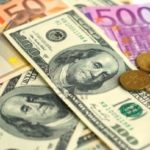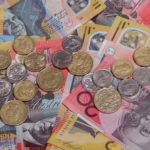Yesterday’s trade saw EUR/USD within the range of 1.1020-1.1100. The pair closed at 1.1059, down 0.32% on a daily basis, or the most considerable daily loss since June 17th, when it dropped 0.42%.
At 6:46 GMT today EUR/USD was down 0.14% for the day to trade at 1.1045. The pair touched a daily low at 1.1037 at 6:22 GMT.
Today the cross may be influenced by a number of macroeconomic reports and other events as listed below.
Fundamentals
United States
Pending Home Sales
The index of pending home sales in the United States probably rose 1.0% in June compared to May, when sales were up at a monthly pace of 0.9%. The latter has been the most modest monthly increase since November 2014, when a rate of 0.6% was recorded.
In annual terms, the index of pending home sales rose 8.3% in May, or at the slowest rate since December 2014, when a climb rate of 6.1% was reported.
When a sales contract is accepted for a property, it is recorded as a pending home sale. As an indicator the index provides information on the number of future home sales, which are in the pipeline. It gathers data from real estate agents and brokers at the point of a sale of contract and is currently the most accurate indicator regarding US housing sector. It samples over 20% of the market. In addition, over 80% of pending house sales are converted to actual home sales within 2 or 3 months. Therefore, this index has a predictive value about actual home sales.
Although there are some cancellations, there are not enough for the data to be skewed one way or another. The base value of the index is equal to 100, while the base year is 2001, when there has been a high level of home sales.
In case pending home sales increased more than anticipated, this would have a moderate bullish effect on the greenback. The National Association of Realtor’s (NAR) will release the official index value at 14:00 GMT.
FOMC decision on monetary policy
The Federal Open Market Committee (FOMC) will probably keep its benchmark interest rate unchanged within the range 0%-0.25% for a 52nd consecutive meeting, after the Quantitative Easing cycle has ended, according to the median forecast by experts.
During her testimony before the Committee on Financial Services, U.S. House of Representatives in Washington D.C. Federal Reserve Chair Janet Yellen noted that the outlook for the US economy remains favorable, which could be taken as an indication that a rate hike may occur at some time this year. According to extracts from Yellens testimony: “Looking forward, prospects are favorable for further improvement in the U.S. labor market and the economy more broadly. Low oil prices and ongoing employment gains should continue to bolster consumer spending, financial conditions generally remain supportive of growth, and the highly accommodative monetary policies abroad should work to strengthen global growth. In addition, some of the headwinds restraining economic growth, including the effects of dollar appreciation on net exports and the effect of lower oil prices on capital spending, should diminish over time. As a result, the FOMC expects U.S. GDP growth to strengthen over the remainder of this year and the unemployment rate to decline gradually.”
“In its most recent statement, the FOMC again noted that it judged it would be appropriate to raise the target range for the federal funds rate when it has seen further improvement in the labor market and is reasonably confident that inflation will move back to its 2 percent objective over the medium term. The Committee will determine the timing of the initial increase in the federal funds rate on a meeting-by-meeting basis, depending on its assessment of realized and expected progress toward its objectives of maximum employment and 2 percent inflation.”
“Indeed, most participants in June projected that an increase in the federal funds target range would likely become appropriate before year-end. But let me emphasize again that these are projections based on the anticipated path of the economy, not statements of intent to raise rates at any particular time.”
”My own outlook for the economy and inflation is broadly consistent with the central tendency of the projections submitted by FOMC participants at the time of our June meeting. Based on my outlook, I expect that it will be appropriate at some point later this year to take the first step to raise the federal funds rate and thus begin normalizing monetary policy.”, Yellen said in a speech at the City Club of Cleveland, ”But I want to emphasize that the course of the economy and inflation remains highly uncertain, and unanticipated developments could delay or accelerate this first step. We will be watching carefully to see if there is continued improvement in labor market conditions, and we will need to be reasonably confident that inflation will move back to 2 percent in the next few years.”
The minutes from Feds policy meeting held on June 16th-17th revealed that US economy is expanding at a sufficiently strong pace, so that it could support an increase in the benchmark rate. According to an extracts from the June minutes: “…economic activity has been expanding moderately after having changed little during the first quarter. The pace of job gains picked up while the unemployment rate remained steady. On balance, a range of labor market indicators suggests that underutilization of labor resources diminished somewhat. Growth in household spending has been moderate and the housing sector has shown some improvement; however, business fixed investment and net exports stayed soft. Inflation continued to run below the Committees longer-run objective, partly reflecting earlier declines in energy prices and decreasing prices of non-energy imports; energy prices appear to have stabilized. Market-based measures of inflation compensation remain low; survey-based measures of longer-term inflation expectations have remained stable.”
”When the Committee decides to begin to remove policy accommodation, it will take a balanced approach consistent with its longer-run goals of maximum employment and inflation of 2 percent. The Committee currently anticipates that, even after employment and inflation are near mandate-consistent levels, economic conditions may, for some time, warrant keeping the target federal funds rate below levels the Committee views as normal in the longer run.”
The FOMC will announce its official decision on policy at 18:00 GMT. A rate hike would surely boost demand for the US dollar.
Bond Yield Spread
The yield on German 2-year government bonds went as high as -0.207% on July 28th, or the highest level since July 16th (-0.204%), after which it slid to -0.217% at the close to gain 0.007 percentage point on a daily basis.
The yield on US 2-year government bonds climbed as high as 0.692% on July 28th, or the highest level since July 24th (0.707%), after which it closed at the same level to gain 3.8 basis points (0.038 percentage point) for the day.
The spread between 2-year US and 2-year German bond yields, which reflects the flow of funds in a short term, widened to 0.909% on July 28th from 0.878% during the prior day. The July 28th difference has been the most notable one since July 23rd, when the yield spread was 0.928%.
Meanwhile, the yield on German 10-year government bonds soared as high as 0.737% on July 28th, or the highest level since July 23rd (0.761%), after which it slid to 0.700% at the close to appreciate 0.005 percentage point compared to July 27th, or the first gain in the past five trading days.
The yield on US 10-year government bonds climbed as high as 2.266% on July 28th, after which it slipped to 2.259% at the close to add 4.3 basis points (0.043 percentage point) on a daily basis, while marking the first gain in the past six trading days.
The spread between 10-year US and 10-year German bond yields widened to 1.559% on July 28th from 1.521% during the prior day. The July 28th yield difference has been the highest one since July 24th, when the spread was 1.562%.
Pivot Points (traditional method)
According to Binary Tribune’s daily analysis, the central pivot point for the pair is at 1.1060. In case EUR/USD manages to breach the first resistance level at 1.1099, it will probably continue up to test 1.1140. In case the second key resistance is broken, the pair will probably attempt to advance to 1.1179.
If EUR/USD manages to breach the first key support at 1.1019, it will probably continue to slide and test 1.0980. With this second key support broken, the movement to the downside will probably continue to 1.0939.
The mid-Pivot levels for today are as follows: M1 – 1.0960, M2 – 1.1000, M3 – 1.1040, M4 – 1.1080, M5 – 1.1120, M6 – 1.1160.
In weekly terms, the central pivot point is at 1.0951. The three key resistance levels are as follows: R1 – 1.1077, R2 – 1.1323, R3 – 1.1449. The three key support levels are: S1 – 1.0705, S2 – 1.0579, S3 – 1.0333.





